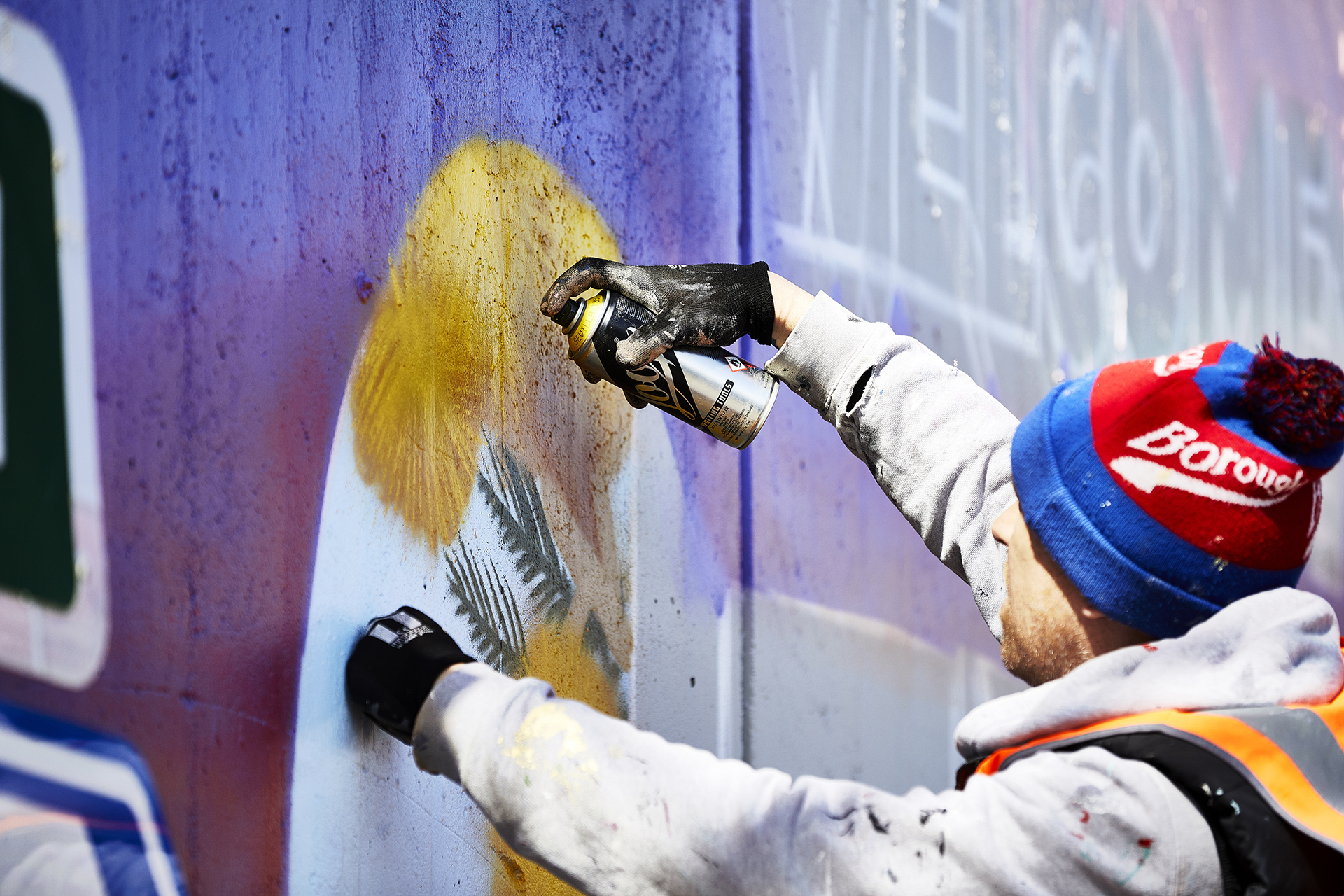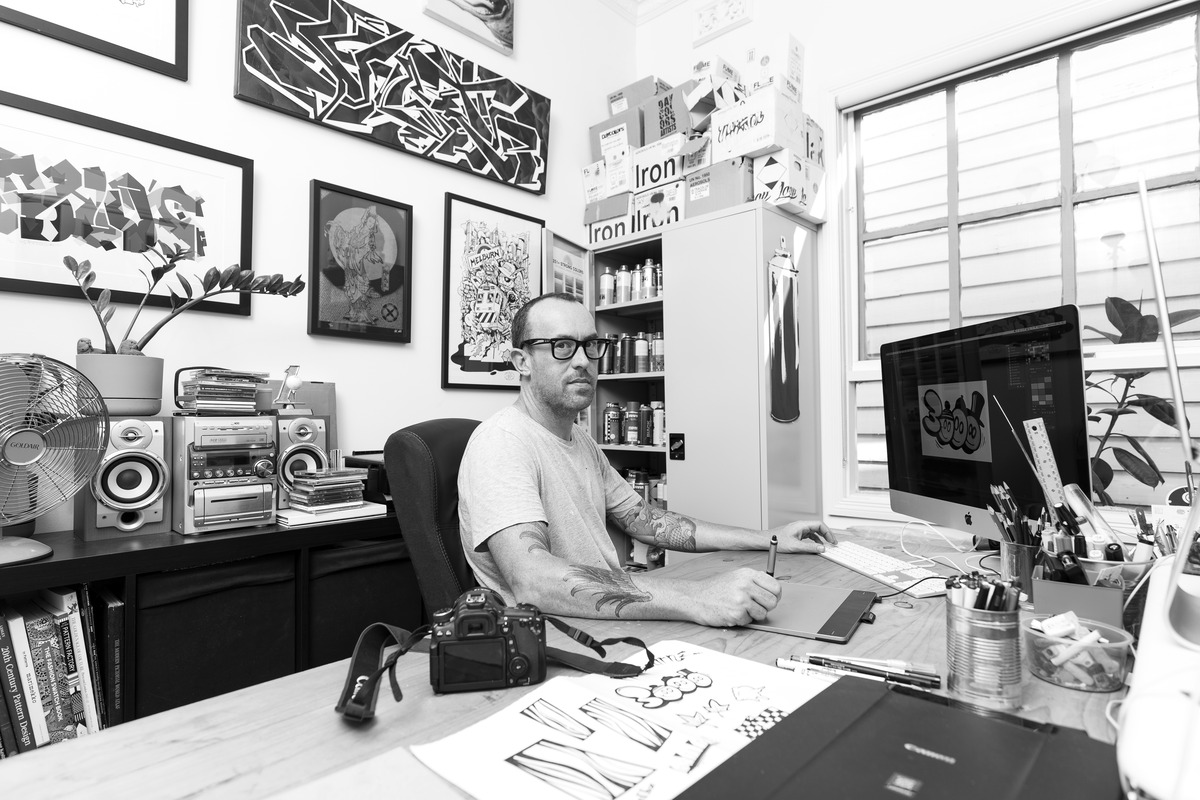Learning to spray paint
Learning to spray paint - Your first step to creating graffiti and street art
Want to turn blank walls into amazing art? Learning how to use spray paint is your first step. Professional graffiti and street artist Danny Awes shares his experience to help you improve your spray paint skills.
Why learning spray paint techniques matters
Before launching your street art journey you should consider learning spray paint techniques. Start with basic techniques and then move onto advanced. Why? Because spray paint is the medium of choice for graffiti and street artists around the world. This is because it's fast drying, it coats your surface well, the colours are vibrant, and spray paint covers uneven surfaces easily and effectively. Spray painting needs controlled body movements, pressure control, and awareness of space that only comes with practice and good advice.
How spray paint has changed urban art
Spray paint was just a household tool that artists adopted as an effective medium for graffiti and street art. Since the early days of hardware paint, companies have emerged that make specialty art-grade spray paints designed for the urban artist. Better quality, smoother valves, better nozzle systems and vast colour options readily available from art stores in most cities. Professional spray paints like Montana Colours offer high quality paints made just for graffiti art.
Essential spray can knowledge for new graffiti and street artists
Understanding your tools: how a spray can works
Spray paint cans are portable, compact and ready to go whenever you are. Becoming a successful graffiti or street artist starts with getting to know your main tool.
Knowing how a spray can works means you understand why paint comes out of the can the way it does. Spray cans can become blocked and even stop working. Knowing your can's inner working means you have the ability to troubleshoot and all this affects how your final piece looks.
Different nozzles and how they can work for you
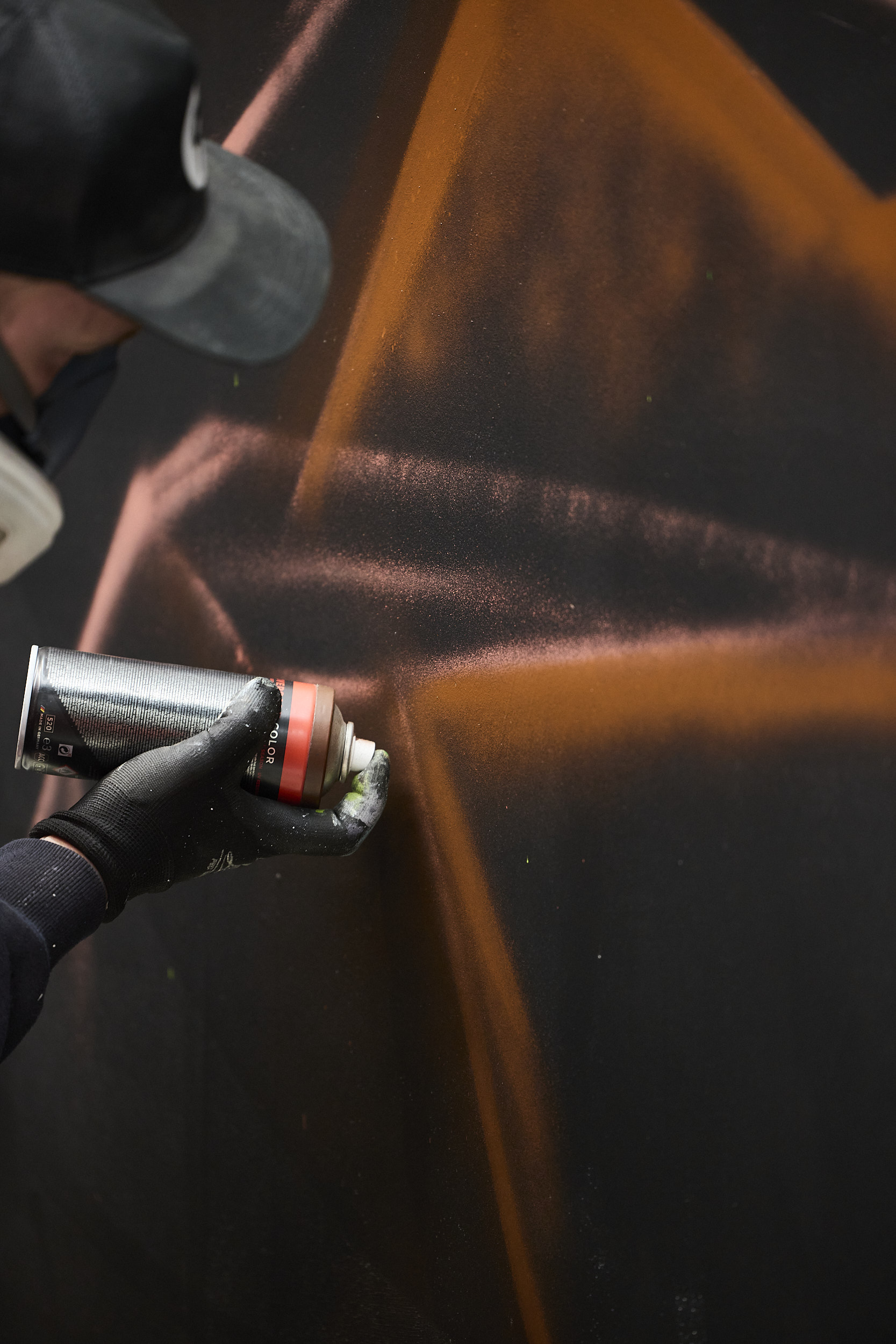
Nozzles (or caps) are very important for spray paint art. They change how paint comes out of the can and how wide a line you can spray:
- Skinny caps make thin, precise lines perfect for details and outlines
- Medium caps provide good balance for most uses, from filling in areas of space to making colour gradients
- Fat caps release wide sprays ideal for backgrounds and quickly filling large areas in street art
Each cap type creates different effects for different parts of your graffiti. Try various combinations to practice developing your own techniques.
Looking after your cans for consistent results
To make your tools last longer and ensure good paint application:
- Shake cans thoroughly before starting your street art project
- Store cans standing up in normal temperatures to keep good pressure
- After each session, turn the can upside down and spray until clear gas comes out to prevent blockages in the can and nozzle
- Use your collection regularly as cans stored too long might not work as well
These simple habits will save you frustration and money - and keep your spray paint in top condition.
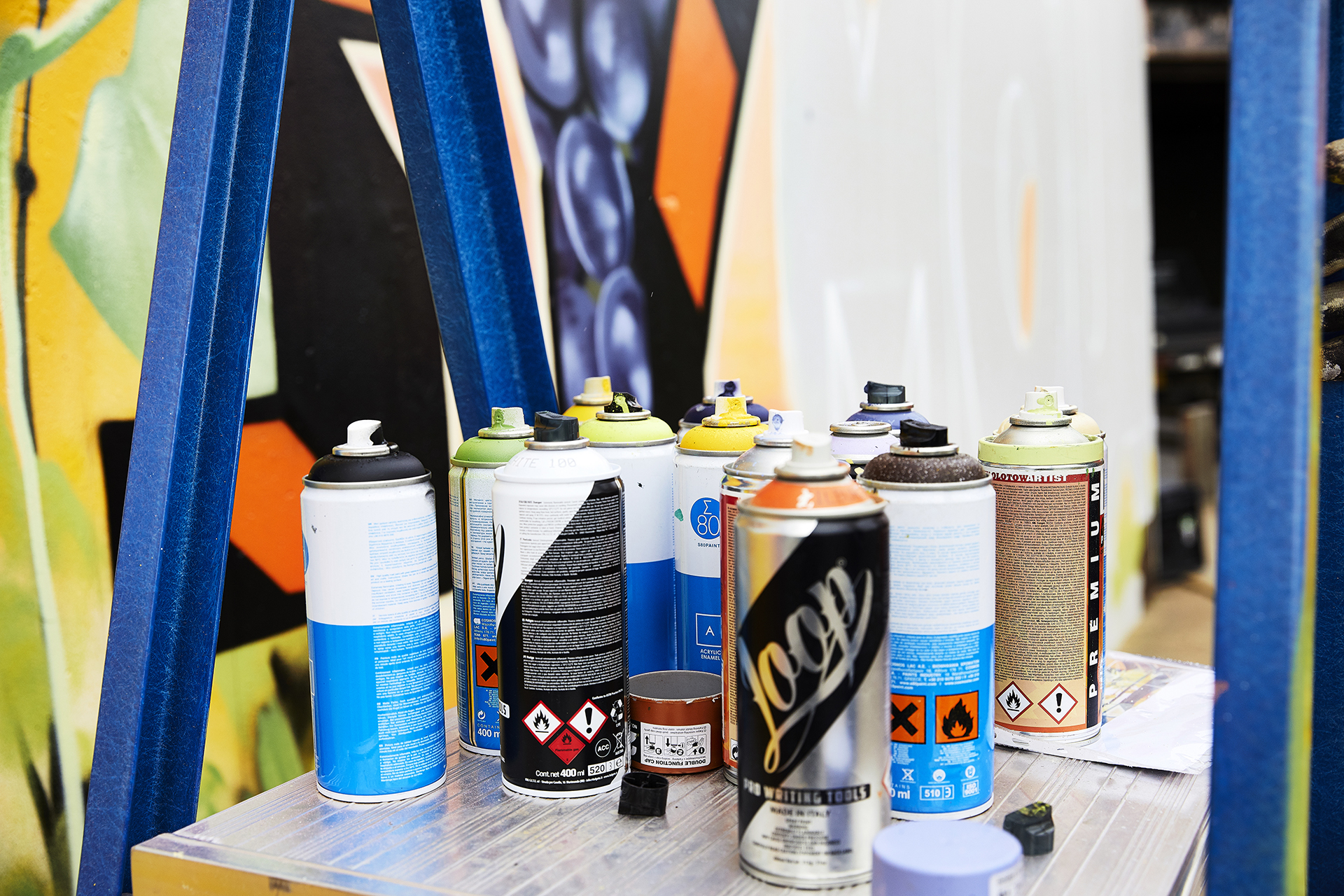
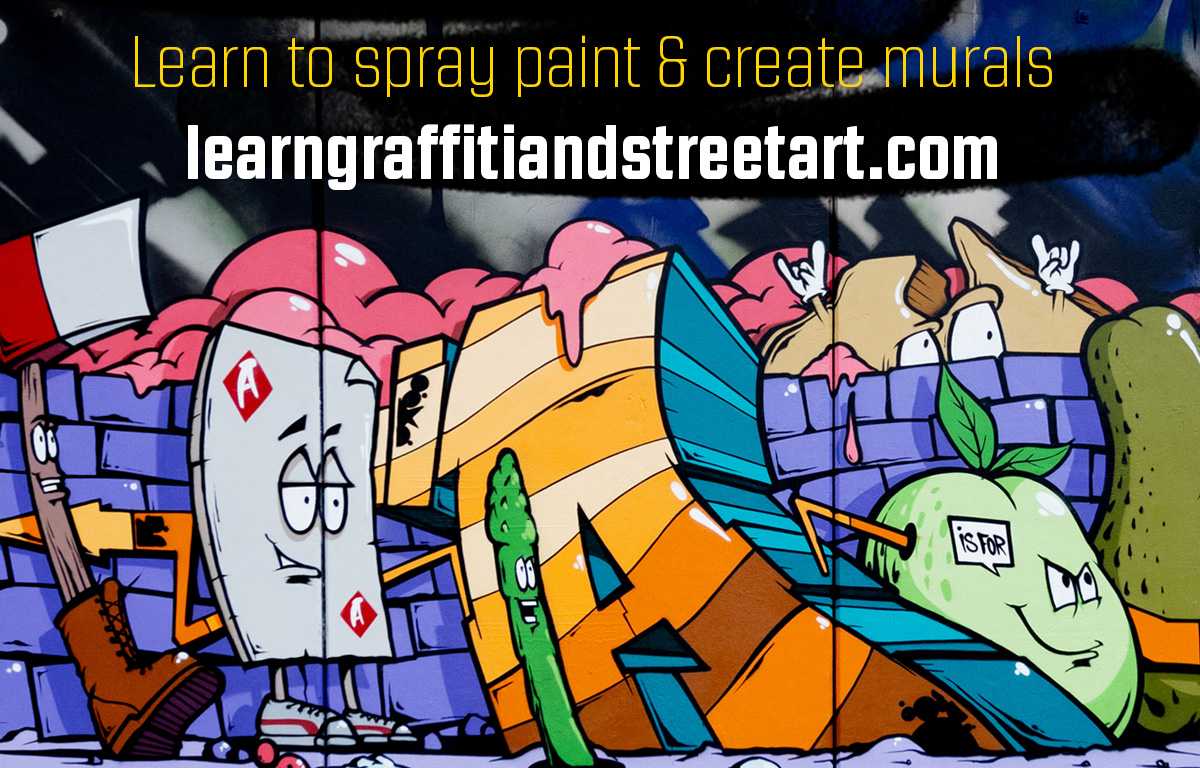
Mastering professional spray techniques
The key to good can control
When creating graffiti and street art with spray paint, you are usually working at a big scale. This means you move your whole body to spray long lines and fill in large areas of space. So it's a lot different to traditional brush painting where you're working at a smaller scale. Professional street artists develop specific muscle memory that helps create their technique and style:
- Hold the spray can firmly against the back of your hand, not with your fingertips
- Keep the same distance between nozzle and surface (usually 15-25 centimetres depending on what effect you want)
- Practice smooth arm movements using your elbow and shoulder as pivot points
- Use your core muscles and the big muscles in your legs and glutes to control big lines. Painting with your whole body gives you more strength, stability and control.
- Practice good stance to stay steady during long sessions.
Before using actual paint, practice your movements to develop muscle memory and space awareness needed for big paintings.
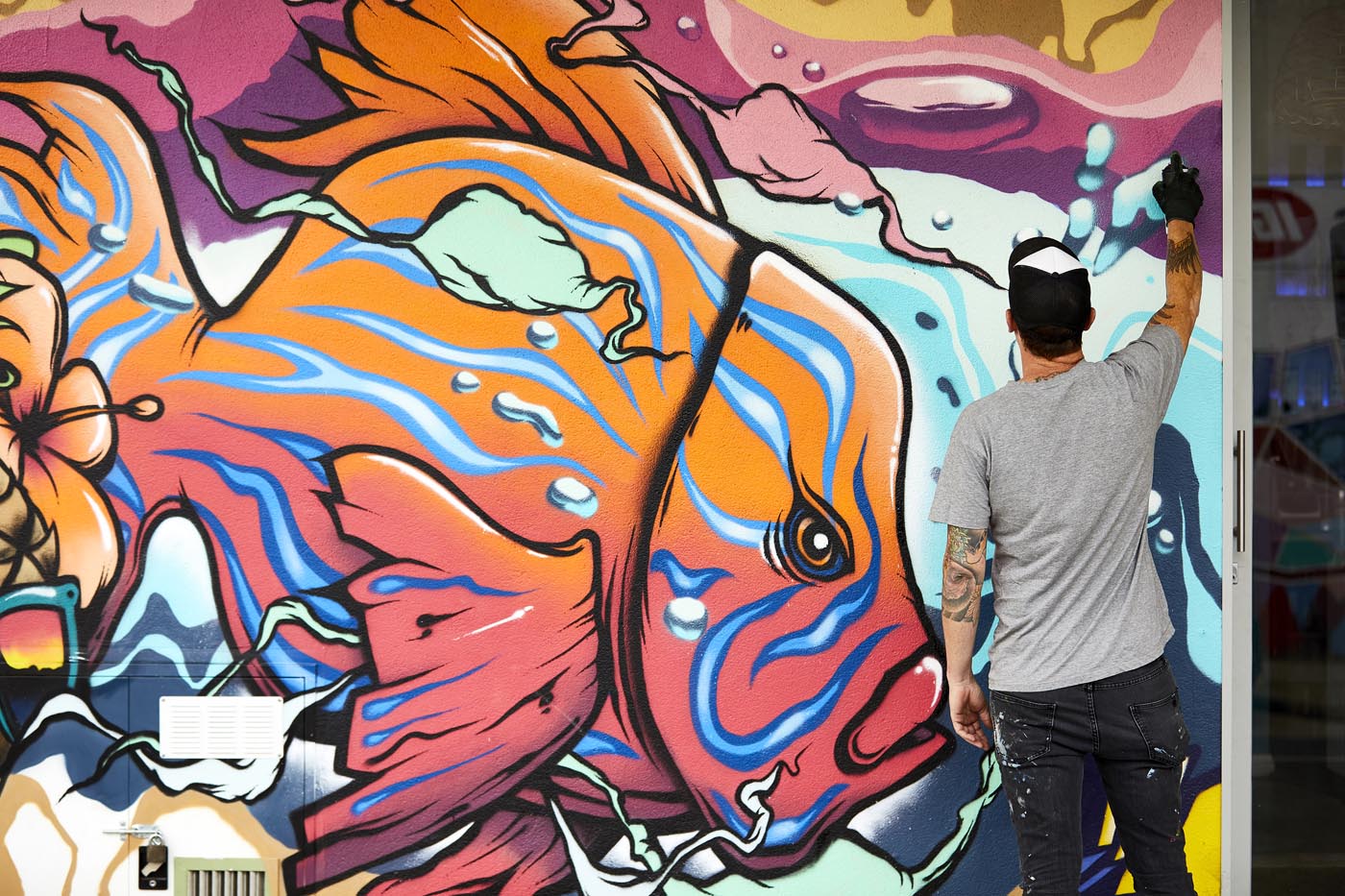
Advanced can control for dynamic spray paint effects
Once you've mastered basic handling, try these techniques used by professional street artists:
Gradient transitions
Create smooth colour transitions by changing your distance from the surface while keeping constant movement. Start further away and gradually move closer (or the opposite) to make beautiful fades that add depth to your graffiti art.

Controlled dripping
Planned drips can add raw energy to your street art. Apply heavier paint in certain areas, then let gravity create controlled runs that enhance your piece's visual impact.
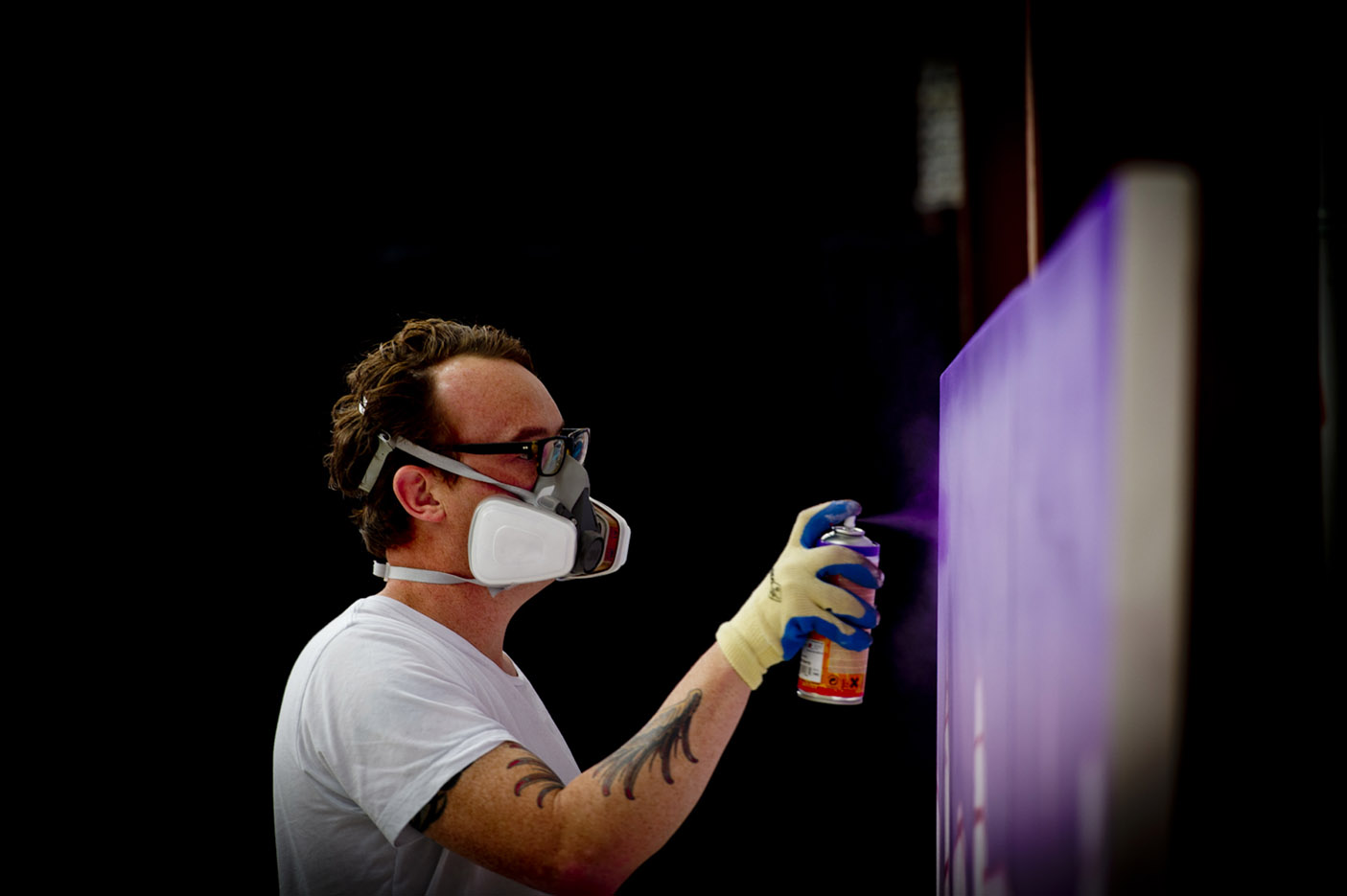
Sharp edges vs. soft blends
Mastering the contrast between crisp, defined lines and gentle colour blends creates interesting visuals. Practice moving between these effects smoothly in the same piece.
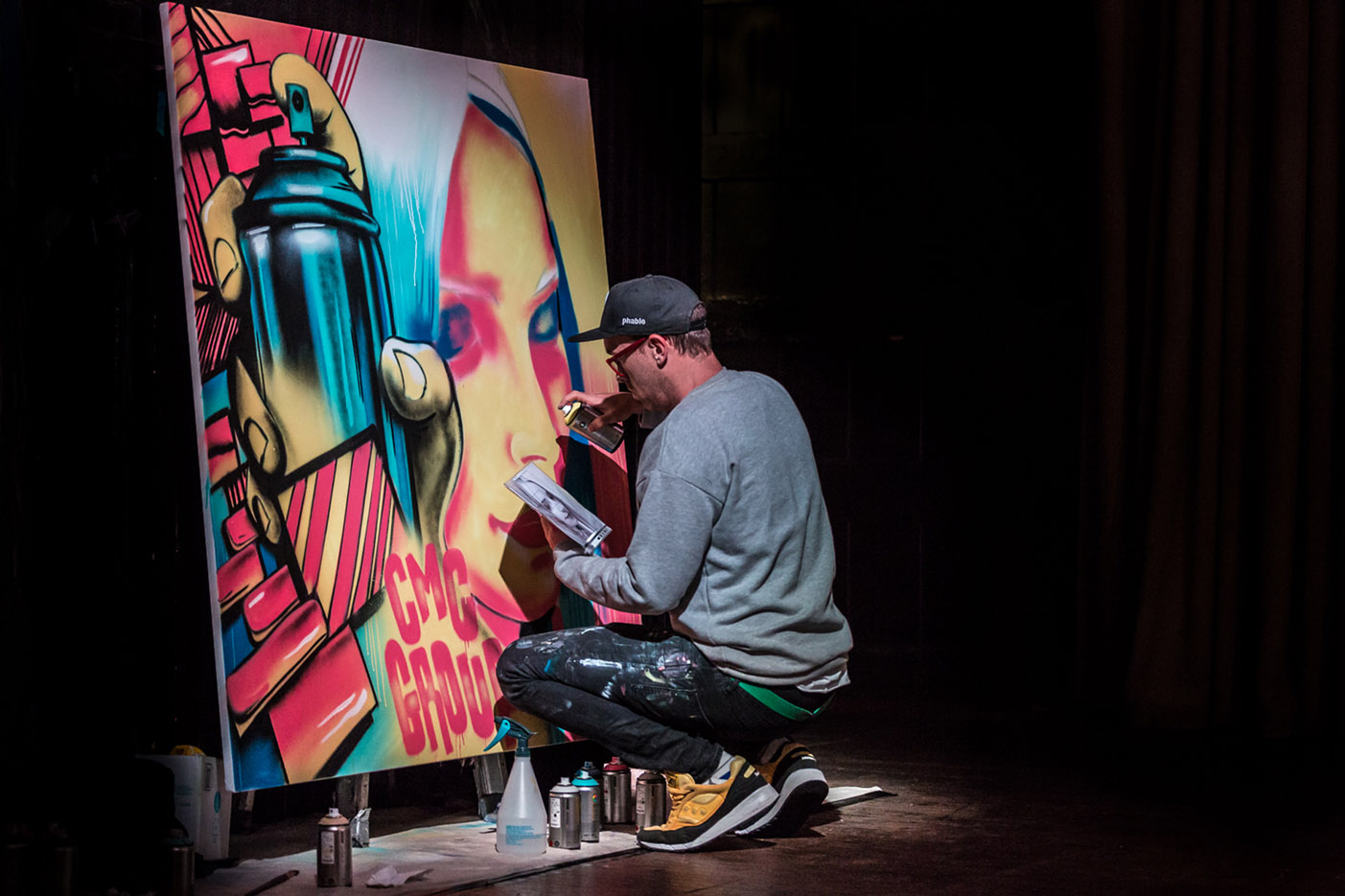
Colour theory basics for impactful graffiti art
Understanding how colours work together not only improves your spray paint skills but lifts your entire artistic approach:
- Complementary colours (opposite on the colour wheel) create vibrant contrast
- Analogous colours (next to each other on the colour wheel) create harmonious transitions
- Warm colours seem to come forward while cool colours seem to go back, creating natural depth
- Strategic use of black and white dramatically affects depth perception
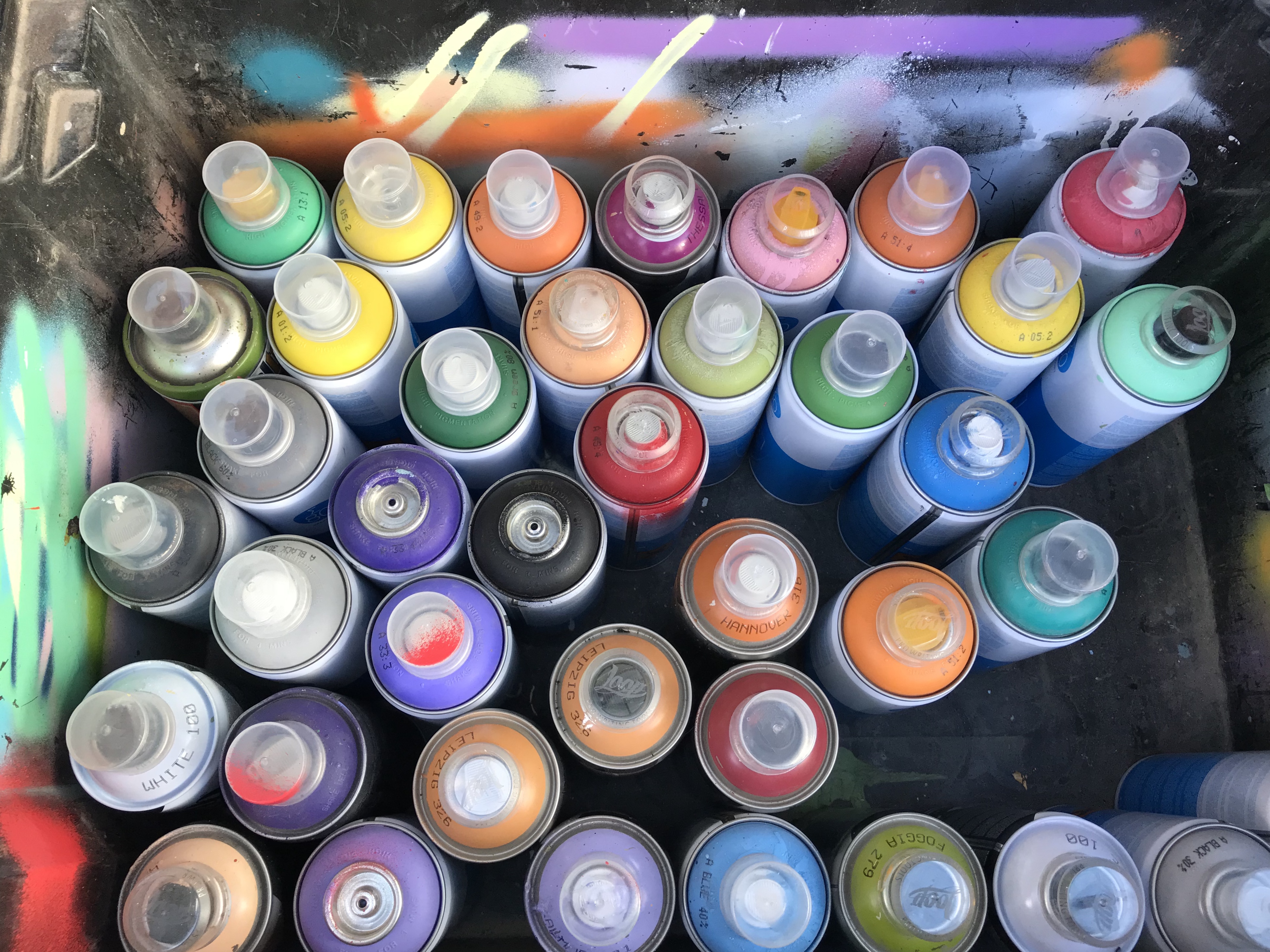
Draw Paint Academy has a detailed guide to colour theory with excellent examples of how professional artists use colour theory to create painted masterpieces.
Creating your ideal workspace for street art
Preparing surfaces for high quality graffiti results
Great graffiti art begins before the first spray. For best paint sticking and bright colours:
- Remove all dust, dirt, and loose material from your surface
- Think about using a primer coat suited to your surface
- Use drop cloths to protect nearby areas from spray paint mist
- Make stencils beforehand if you want precise shapes in your street art
Things like humidity and temperature can affect how spray paint works. If you’re painting outside, consider working on a calm, fine day for even application and proper drying.
Safety tips for serious street artists
Professional street artists take care of their health while making art:
- Work in areas with good airflow whenever possible
- Buy a good respirator mask made for spray paint particles
- Wear nitrile gloves to protect your skin from chemicals
Spray paint safety 101 from Bombing Science offers excellent resources on safety equipment made for graffiti and street art creators.
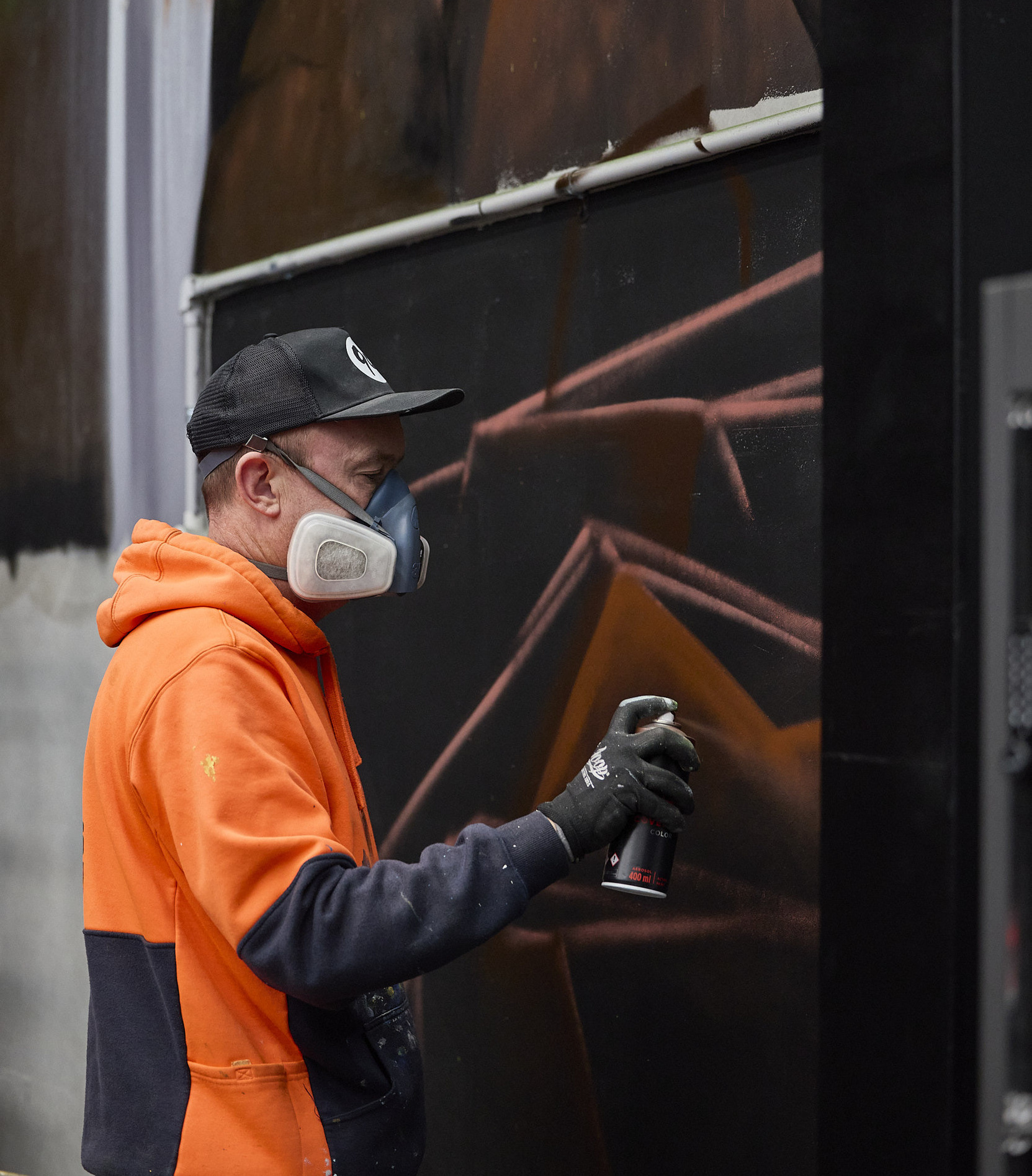
From beginner to expert: building your graffiti art skills
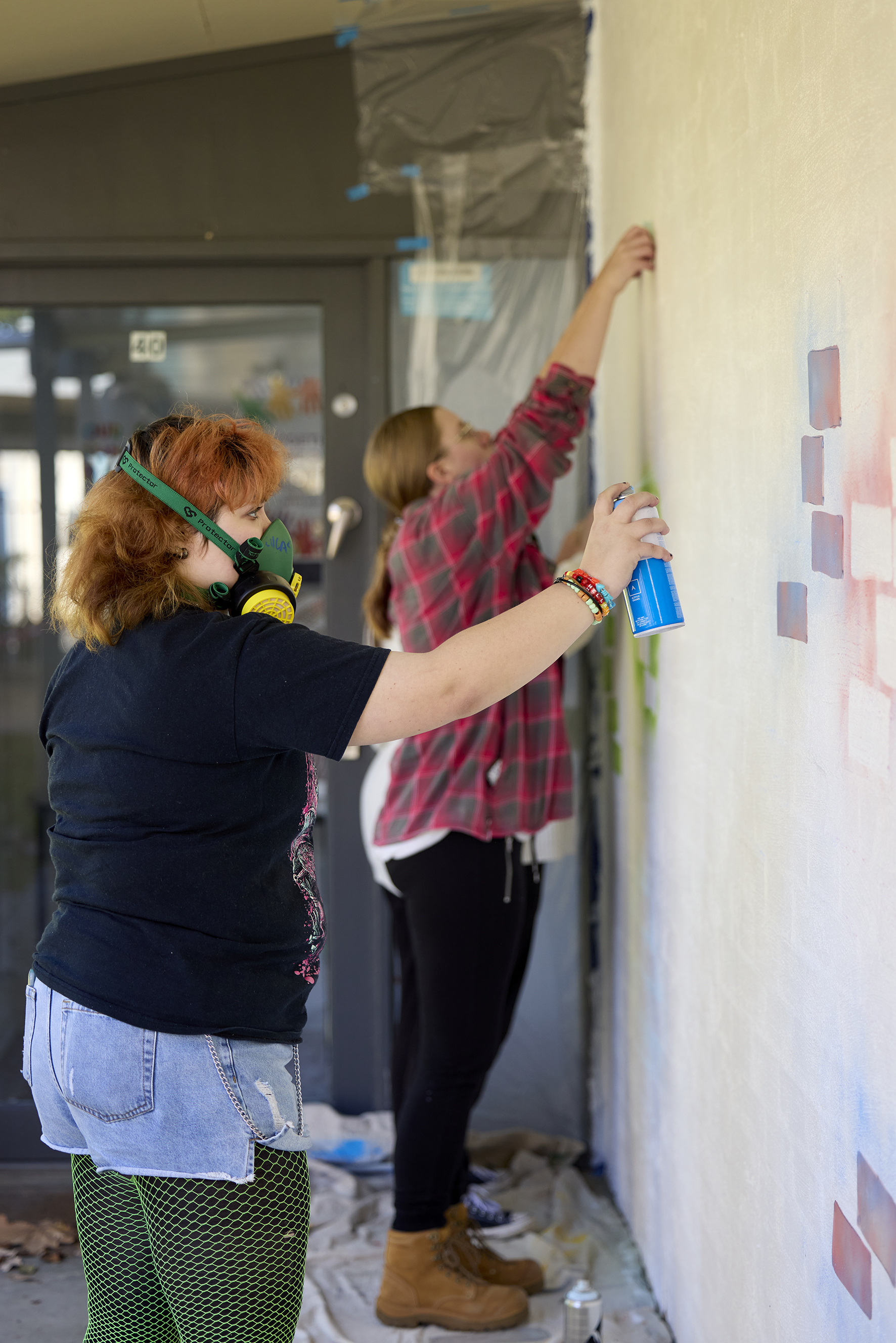
Practice exercises to develop spray paint mastery
Regular practice with specific goals will speed up your development:
- Line control exercise: practice creating straight, curved, and zigzag lines with consistent thickness
- Fill technique exercise: master even colour application without streaks or drips
- Gradient challenge: create smooth transitions between contrasting colours
- Detail practice: work on increasingly smaller elements to improve precision
Document your progress by photographing your practice pieces
This visual record helps identify areas to improve and celebrates your growing mastery of graffiti techniques. Don’t forget to share your efforts and tag us on instagram! @90degreesart
Finding inspiration and developing your unique street art style
While technique is crucial, authentic artistic expression comes from developing your own style:
- Study different graffiti styles from wildstyle to bubble letters to abstract forms
- Draw inspiration from sources beyond street art (architecture, nature, film and tv shows)
- Experiment with techniques that feel right for your personal style
- Embrace "happy accidents" as potential signature elements
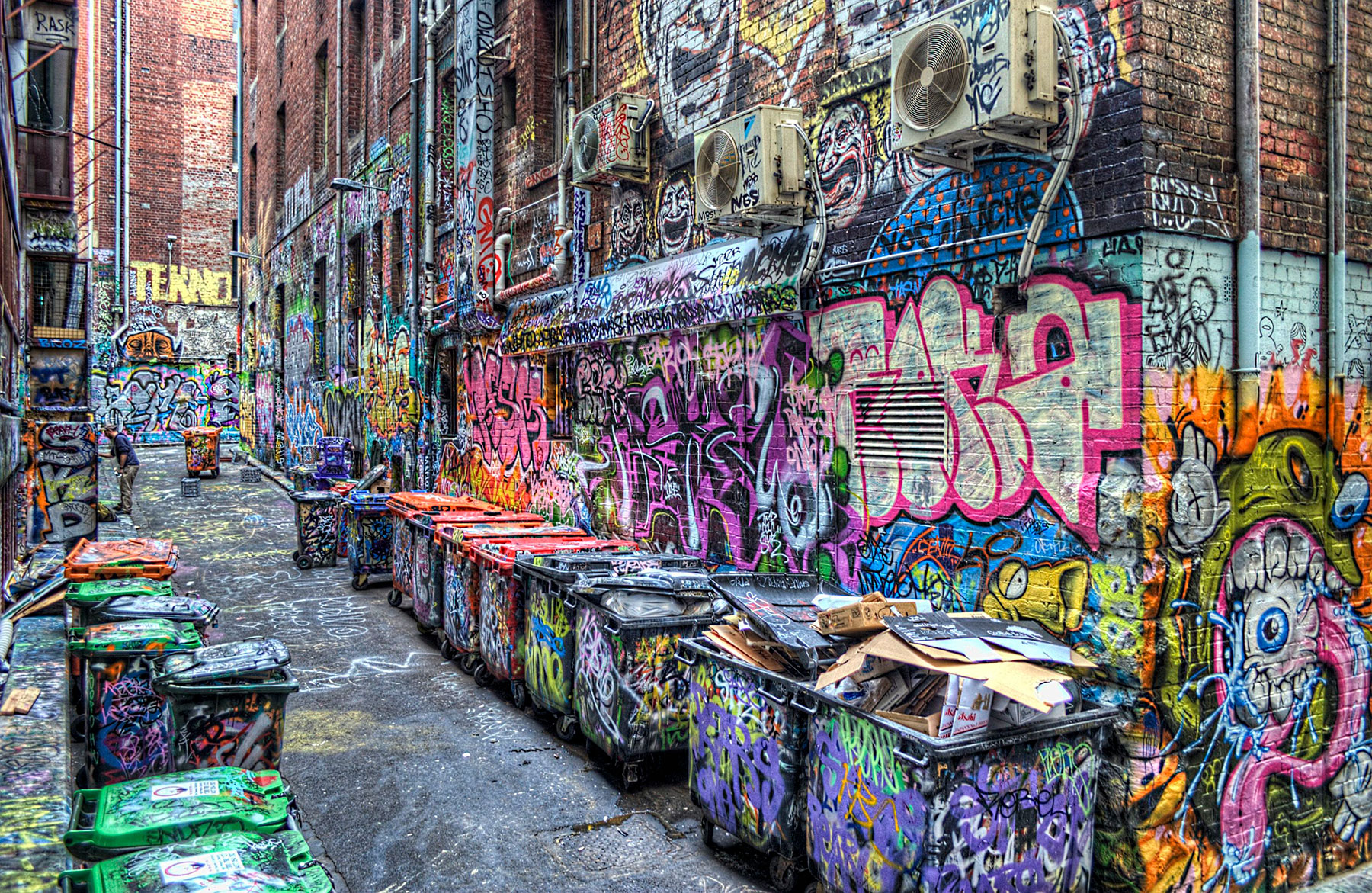
The most memorable street artists don't simply copy existing styles—they push boundaries and create distinctive approaches that become instantly recognisable.
Taking your graffiti art to new heights
By including these professional techniques in your practice, you'll develop the technical foundation needed for creating stunning graffiti art that captures viewers' attention and expresses your unique creative vision.
Remember that mastery comes through consistent practice, experimentation, and studying both old and new street art movements. Document your journey, connect with fellow artists, and continuously challenge yourself to grow.
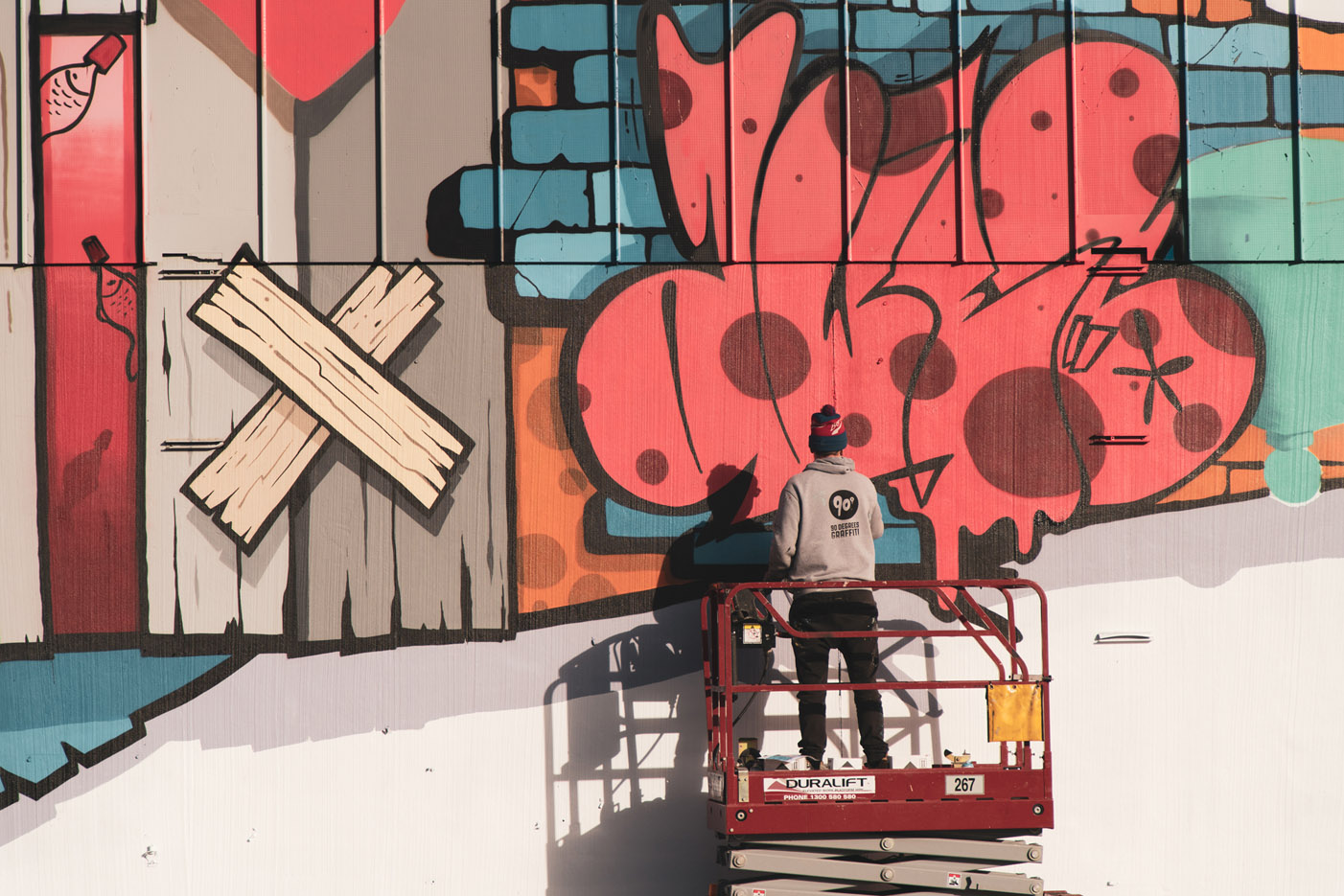
Learn directly from 90 Degrees Art
Ready to speed up your development and join a community of passionate street artists? Our comprehensive online course A complete guide to graffiti and street art gives you direct access to professional techniques taught by renowned artist Danny Awes.
Using videos, step by step lessons and incredible tips from Danny, you’ll be guided through everything you need to know to create your own street art and graffiti.
From basic spray control to right through to creating a mural, our step-by-step curriculum guides you through every aspect of creating impressive graffiti art and street installations.
What you'll learn in our course:
- Equipment and setting up your work space
- Beginners guide to painting with spray paint
- Advanced spray painting techniques
- Other street art techniques like stencils, paste ups and stickering
- Designing and creating your own mural
Sign up for the course

Our Services
- MuralsGraffiti and street art murals for anywhere - hospitality, office, residential...01
- Brand ActivationsBranded live graffiti for product launches & brand activations. 02
- EventsLive artwork production by graffiti and street artists for events.03
- Removable ArtStreet art and graffiti prints, canvases and wallpaper.04
- DesignLogos, rebranding, graffiti and street art graphic design for print and digital.05
- WorkshopsLearn to paint with a spray can via a graffiti workshop experience.06
- Content CreationFilm a mural being painted and share the content on socials.07
- MaintenanceCare and upkeep of outdoor and indoor graffiti and street art murals.08
Read more about our services. Learn about our process.
